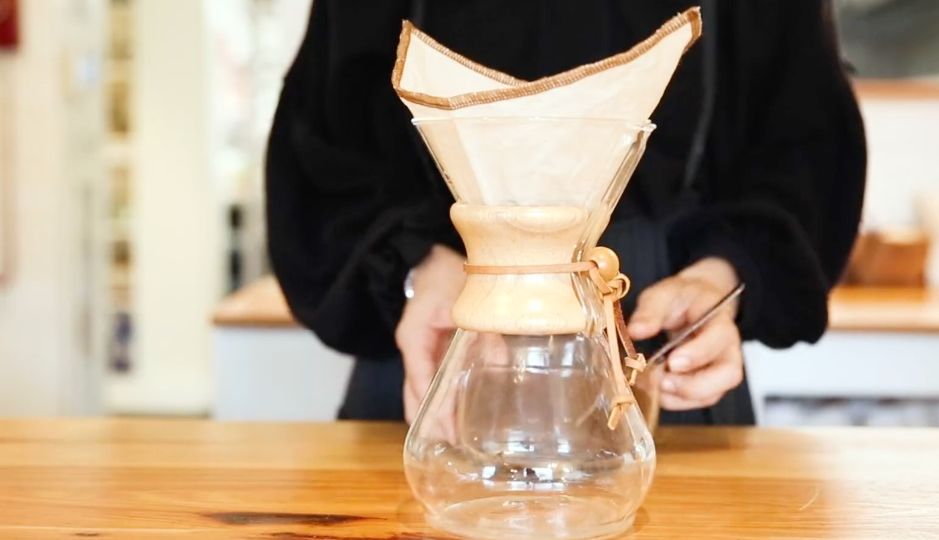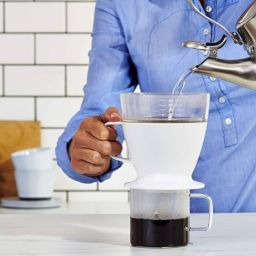
Reusable pour-over coffee filters are eco-friendly alternatives to disposable paper filters. Designed for use in pour-over coffee makers, these filters come in various materials like stainless steel, cloth, or hemp. They’re all about enhancing your coffee experience while reducing waste. With these filters, not only do you get a rich and nuanced cup of joe, but you also contribute positively to the environment. They’re a smart pick for any coffee lover looking to make their daily brew a bit greener.
Key Takeaways
- Environmental Benefits: Switching to reusable filters significantly reduces waste. Unlike single-use paper filters, these can last for years, cutting down on your trash output and helping the planet.
- Taste and Usability Comparison: Reusable filters and paper filters offer distinct taste profiles. While paper filters can provide a cleaner cup by removing more oils, reusable ones let more natural oils pass through, potentially adding more depth to your coffee’s flavor.
- Material and Shape Varieties: From stainless steel to organic fabric, the material of your filter can influence your coffee’s taste. The shape, whether conical or flat, also plays a role in the extraction process, affecting the final brew.
- Selection and Maintenance Tips: Choosing the right filter involves considering your taste preference and coffee routine. Maintenance is straightforward – just clean regularly to prevent residue buildup and ensure the longevity of the filter.
Benefits of Using Reusable Pour Over Coffee Filters
Switching to a reusable pour-over coffee filter brings a host of advantages that extend beyond just your morning brew ritual. Let’s explore the key benefits, from environmental impact to cost savings and taste nuances.
Environmental Impact
Using a reusable coffee filter is a small but meaningful step toward sustainability. Each time you brew, you’re saving a disposable paper filter from ending up in a landfill. Over a year, that adds up to hundreds, if not thousands, of paper filters. Reusable filters not only minimize waste but also reduce the demand for paper production, which involves water, energy, and trees. It’s a simple switch with a tangible impact on our planet’s health.
Cost-Effectiveness
Initially, a reusable filter might seem like a bigger investment compared to a pack of paper filters. However, the longevity of a reusable filter means you’ll save money in the long run. Instead of buying new packs every few weeks or months, a single reusable filter can last for years with proper care. Over time, the savings add up, making it a financially smart choice for regular coffee drinkers.
Taste Differences
When it comes to taste, reusable filters offer a unique experience. Unlike paper filters, which can absorb some of the coffee’s oils and flavors, reusable options allow more oils to pass through. This can result in a richer, fuller-bodied cup of coffee. The taste difference is noticeable and often appreciated by coffee enthusiasts who enjoy the complexity of flavors that coffee can offer.
Moreover, the type of material—be it stainless steel, cloth, or another eco-friendly option—can slightly alter the flavor profile, giving you the chance to customize your coffee experience. Some users prefer the crisp taste from a paper filter, while others revel in the robust flavor that a reusable filter can provide. It’s all about personal preference and discovering what makes your coffee perfect for you.
Different Materials and Designs
When it comes to reusable pour-over coffee filters, the material and design play pivotal roles in shaping your coffee’s taste and brewing experience. Here’s how different materials and designs influence your morning cup.
Stainless Steel Filters
Stainless steel filters are popular for their durability and ease of cleaning. They typically feature fine mesh designs that allow oils and fine coffee particles to pass through, contributing to a richer and more full-bodied brew. Stainless steel doesn’t absorb any flavors, ensuring a pure coffee taste each time. However, these filters can let through more sediment, so if you prefer a cleaner cup, you might need to adjust your grind size or brewing technique.
Fabric Filters
Fabric filters, often made from cotton or hemp, offer a middle ground between the crispness of paper and the full-bodied richness of metal filters. They tend to hold back more sediment than stainless steel but allow more oils to pass through than paper, creating a smooth and flavorful cup. Fabric filters do require more maintenance, as they need to be thoroughly cleaned and dried after each use to prevent mold and off-flavors.
Design and Shape Impact
The design and shape of the filter significantly affect the extraction process and the final taste of your coffee. Cone-shaped filters, for instance, encourage water to flow through the coffee grounds in a narrow path, enhancing the extraction of flavors. Flat-bottomed filters spread the water out more evenly, which can lead to a more consistent and balanced extraction.
The thickness and pattern of the mesh or weave in the filter also play roles. A finer mesh or tighter weave will allow fewer coffee particles and oils to pass through, which can result in a cleaner taste. In contrast, a coarser design will enable more oils and fine grounds to seep through, adding body and richness to the coffee but potentially also some sediment.
Comparison: Reusable vs. Paper Filters
When it comes to brewing pour-over coffee, the choice between reusable and paper filters can significantly affect various aspects of your coffee experience. Let’s delve into how these two filter types compare in terms of taste, ease of use, environmental impact, and cost considerations.
Taste Comparison
Reusable filters, such as those made of stainless steel or fabric, tend to allow more coffee oils and fine particles to pass through. This often results in a coffee with a richer, fuller body and a more pronounced flavor profile. On the other hand, paper filters are excellent at trapping oils and fine grounds, delivering a cleaner, crisper cup of coffee with less sediment. The choice here largely depends on personal preference and the desired taste profile.
Ease of Use
Paper filters are synonymous with convenience. After brewing, you can simply dispose of the paper filter and the grounds, making cleanup a breeze. Reusable filters require a bit more effort in terms of cleaning and maintenance. However, they eliminate the need to stock up on disposable filters and offer the flexibility to experiment with different brewing techniques and grind sizes.
Environmental Impact
There’s a clear winner in this category: reusable filters. Opting for a reusable filter significantly reduces waste and the need for continuous production of disposable paper filters. While paper filters are biodegradable, they still contribute to waste, and the manufacturing process has its own environmental footprint. Reusable filters, with proper care, can last for years, offering a more sustainable option for environmentally conscious coffee drinkers.
Cost Considerations
While the upfront cost of a reusable filter is typically higher than a pack of paper filters, the long-term savings are significant. A reusable filter can last for years, eliminating the ongoing expense of replacing paper filters. Over time, this can add up to substantial savings, especially for daily coffee drinkers. Paper filters, though initially inexpensive, require continuous repurchasing, which can accumulate in cost over the long term.
Maintenance and Care for Reusable Filters
Proper maintenance is key to ensuring your reusable pour-over coffee filter remains in top condition, delivering the best taste and lasting as long as possible. After each use, rinse the filter thoroughly with warm water to remove coffee grounds and oils. For a deeper clean, soak the filter in a mixture of water and vinegar or use a gentle, non-abrasive detergent. Avoid using harsh chemicals that can damage the filter material or leave unwanted residues.
Stainless steel filters can often be cleaned in the dishwasher, while fabric filters should be washed by hand and air-dried completely to prevent mildew. Regular cleaning not only maintains the quality of your coffee but also extends the filter’s lifespan, making it a more sustainable option in the long run.
FAQs
What are the main differences between materials used in reusable filters? Stainless steel filters offer durability and ease of cleaning, while fabric filters, like those made from cotton or hemp, provide a different taste profile, potentially allowing fewer oils through.
How should I clean my reusable coffee filter properly? Rinse your filter after each use and conduct a deeper cleaning periodically with a vinegar-water solution or a gentle detergent, depending on the filter material.
How often should I replace my reusable coffee filter? With proper care, a reusable coffee filter can last for years. Monitor the filter’s condition and replace it if you notice any significant wear or changes in the quality of your coffee.
Final Thoughts
Choosing a reusable pour-over coffee filter is a step toward a more sustainable and flavorful coffee brewing experience. By maintaining and caring for your filter properly, you ensure that it continues to provide the best possible taste and remains a durable part of your coffee routine. Embracing reusable options not only enhances your coffee experience but also aligns with eco-friendly practices, benefiting both you and the environment.








